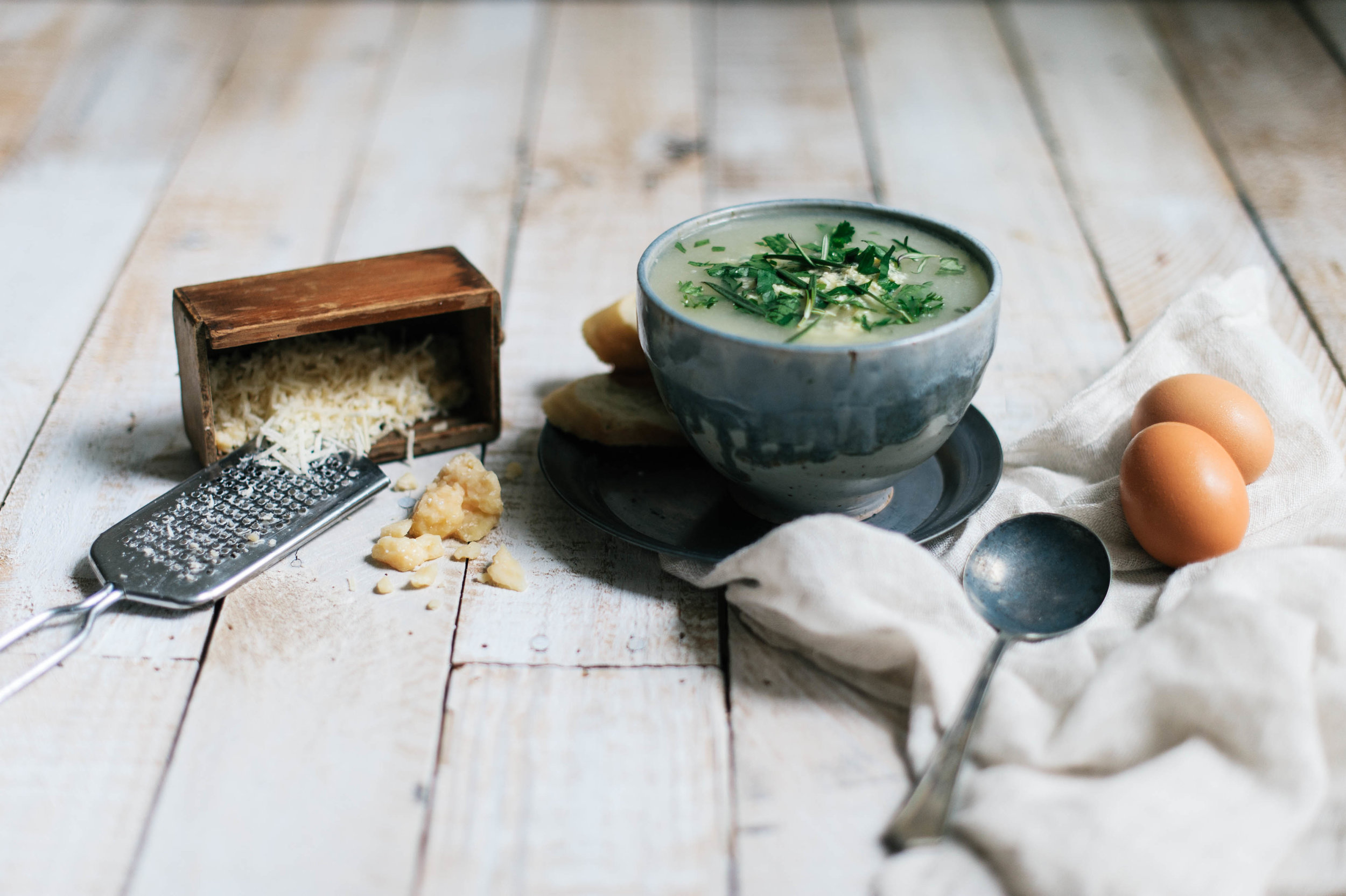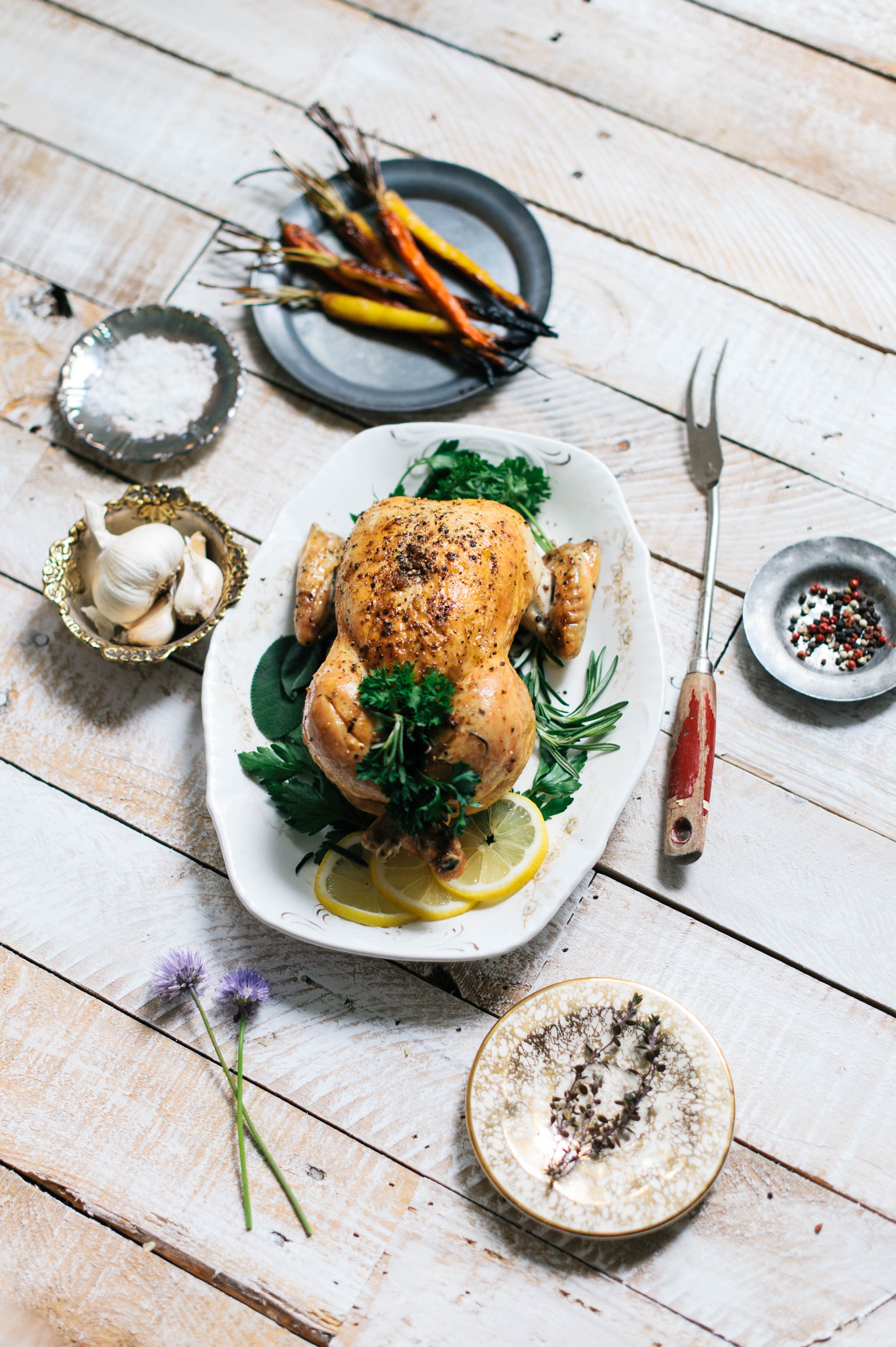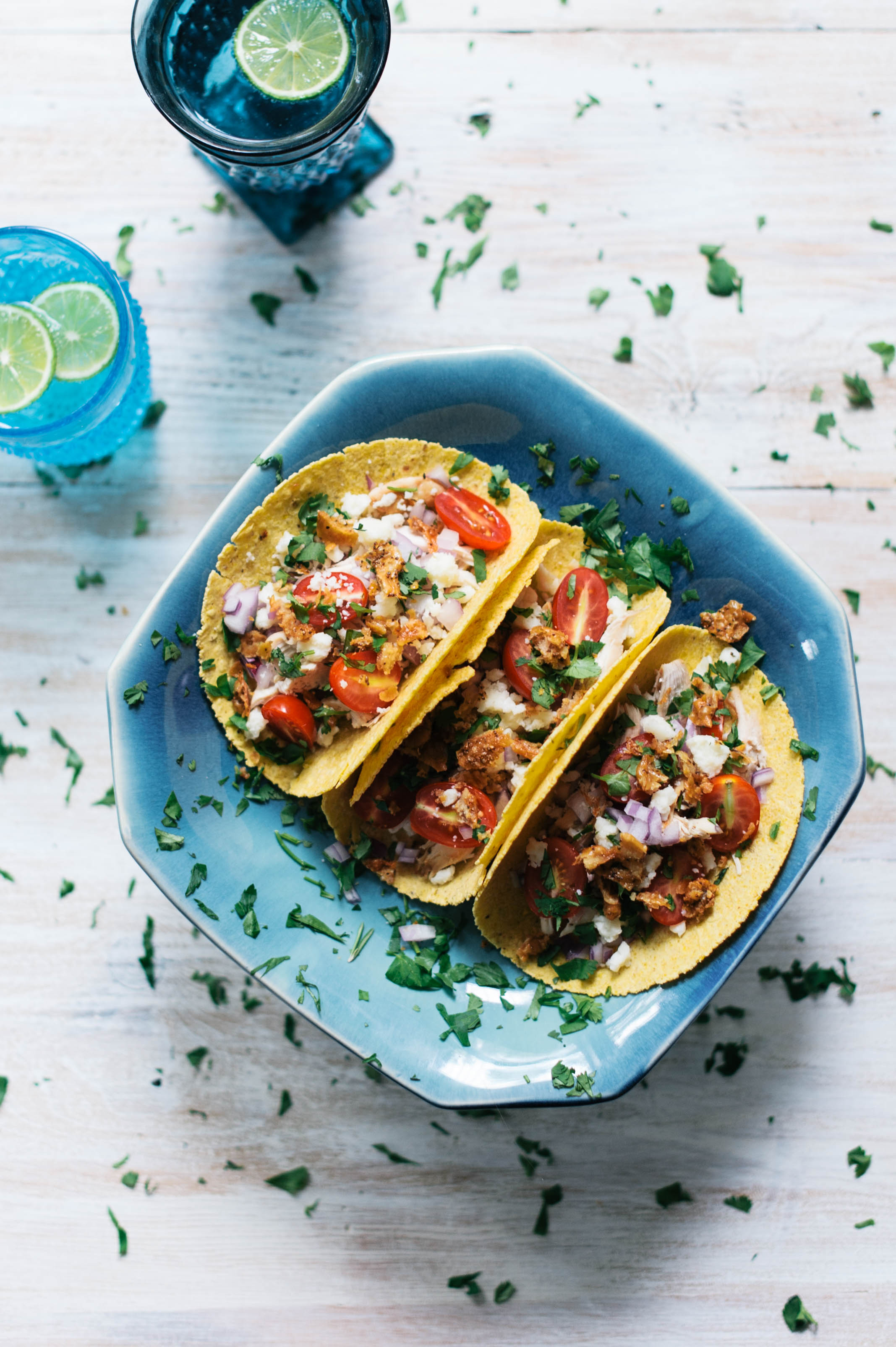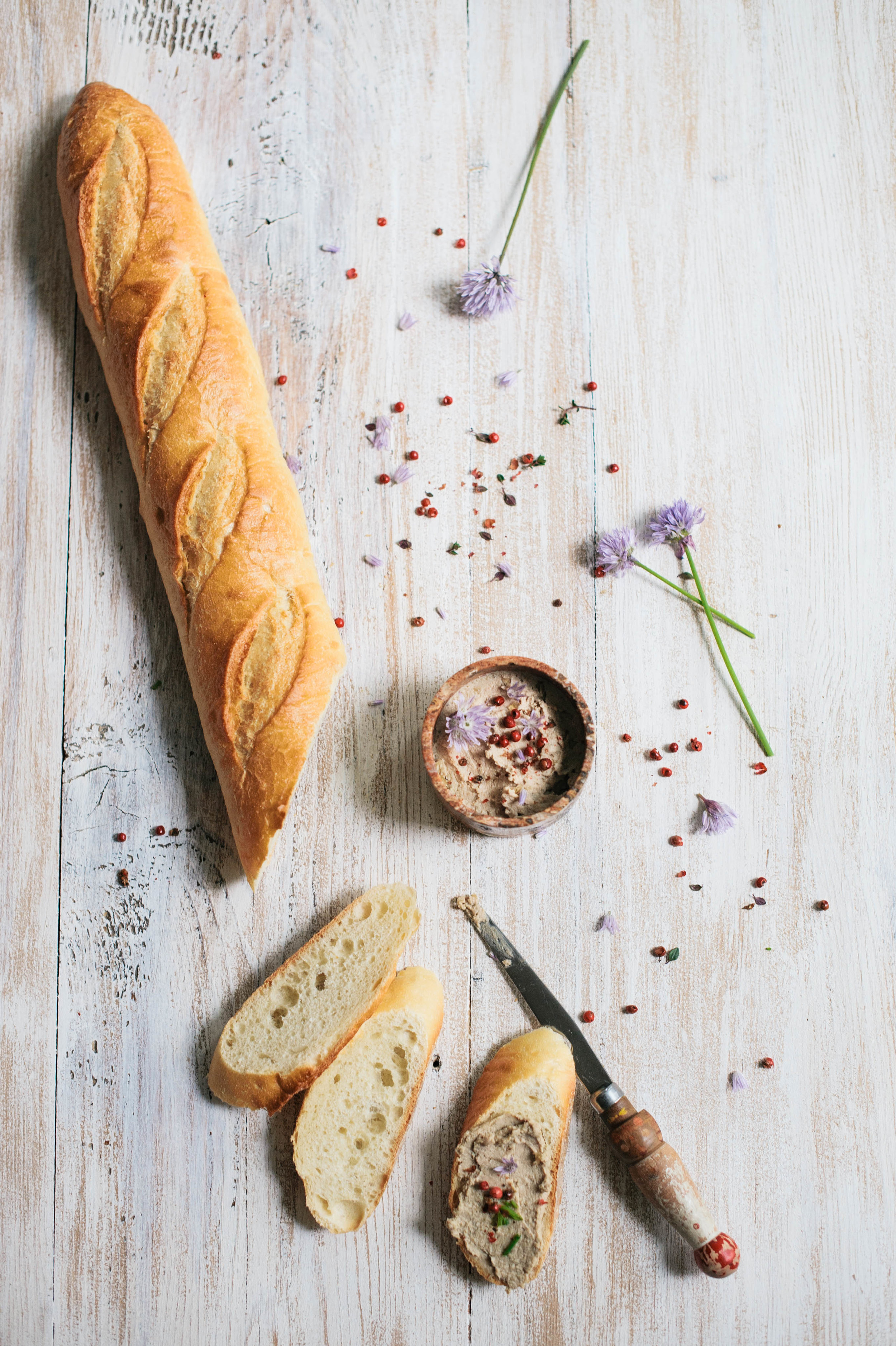How To Stretch Your [Not Cheap] Chicken
/By Whitney Pipkin, Photos by Bailey Weaver
Maybe you’ve heard that free-range, Portlandia-like poultry is better for you or the environment. But you’re still struggling to pull the trigger on that $30 whole chicken.
A heritage breed, dandelion-eating turkey is one thing for a Thanksgiving feast, but shelling out that much for a weeknight dinner can be quite another. And what if you get it home only to bungle the whole simple-roast-chicken thing?
We’re here to help, and we’d like to provide a little more inspiration—about why your poultry purchase matters and what to do with it once you bring the whole bird home.
Not far from your favorite Washington-area farmers market is the Delmarva Peninsula, which forms the Eastern edge of the Chesapeake Bay. This tri-state promontory is Ground Zero for large-scale chicken meat production, with 569 million chickens grown there in 2014.
A map of chicken production from the U.S. Census shows a density of blue dots clustered on this patch of peninsula, where the type of concentrated chicken farming that began in the 1920s appears to only be getting bigger in recent years.
These chickens, many of which grow to market size in just six weeks inside expansive dome-like buildings, produce a lot of manure in the process, and opinions diverge on the best methods for dealing with it. Agriculture (and, namely, that manure) is the largest source of phosphorous pollution to the Chesapeake Bay.
Maryland intends to regulate in the coming years the amount of manure farmers are allowed to spread back onto their land as fertilizer, as is the practice. Excess manure on saturated land can seep into the bay.
But this type of concentrated, fast-growing chicken production is nothing if not efficient. It can produce more pounds of America’s favorite protein in less time than alternatives, such as pasture-raised poultry or slow-growing heritage breeds.
Still, a less-expensive chicken at the store can come with other costs.
That’s one of the reasons Carole Morrison stopped raising chickens the way almost everyone else was on the Delmarva Peninsula several years ago. Her Pocomoke City farm now sells “pasture-raised” and “cage-free” eggs to Whole Foods Markets at a premium. Doing so allows her to live off of raising 500 hens compared with the 300,000 she and her husband, Frank, spent 23 years growing for Perdue Farms.
Raising chickens and eggs this way costs more, and so do the products. Unlike a quarter-cow or whole pig you can purchase directly from farmers, local chickens aren’t as easy to buy in bulk.
A new company called Shenandoah Valley Organic is trying to change that by creating GMO-free and organic brands for chicken that are now available under the Blue Ridge Trail brand at area Costco stores and Red Wheelbarrow brand at MOM’s Organic Market.
Still, paying incrementally more for chicken means you have to find efficiencies in the kitchen, too. That’s the lesson learned by dozens of restaurant chefs who’ve committed to sourcing local products.
“There’s very few people that are willing to pay for it,” says Rob Weland, chef-owner of The Garrison on Barracks Row. “Customers don’t always get the perceived value [of a more expensive chicken], even if I do say poulet rouge on the menu.”
Once Weland committed to buying local poultry, first from Joel Salatin’s Polyface Farms while he was chef at Poste Modern Brasserie, he had to find a way to use the entire bird.
Birding for Beginners
Some tips from the pros for cooking a better bird:
- Don’t rinse the chicken. It spreads germs and is unnecessary.
- Try spatchcocking the chicken to flatten it for even roasting. (Or have the butcher do the hatchet work.)
- Ask your farmer or butcher for chicken feet, too, which can make excellent broth.
- Let the roast bird rest, and leave time for breaking it down. Don’t start your Sunday roast so late that you don’t have the energy to follow through on your grand plans for chicken-five-ways.
- Don’t toss the fat. Make schmaltz!
He would serve it roasted and whole as an impressive entrée or deploy its disparate parts throughout the menu—with grilled wings and cracklin’s starring as bar snacks and liver being transformed into a mousse.
But on the home front, Weland’s wife, Amy Garrett, is the master of putting a whole bird to work for several weeknight dishes. Together they’ll break down the remnants of a roast chicken to make stock, saving any leftover meat for tacos or potpie and the fat and skin for any number of dishes.
We talked to Weland about how to make a more expensive bird stretch for more meals in a home kitchen. Here are some of his go-to recipes. (Click on the the large photo to get the recipe).





Additional recipe links:




